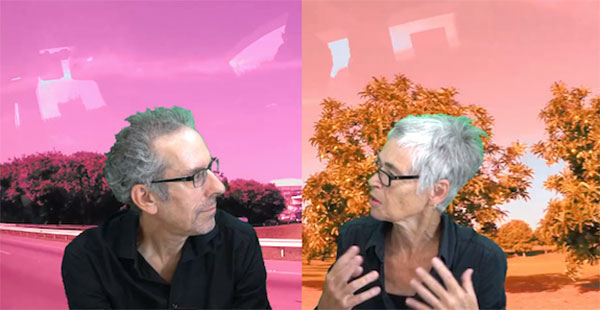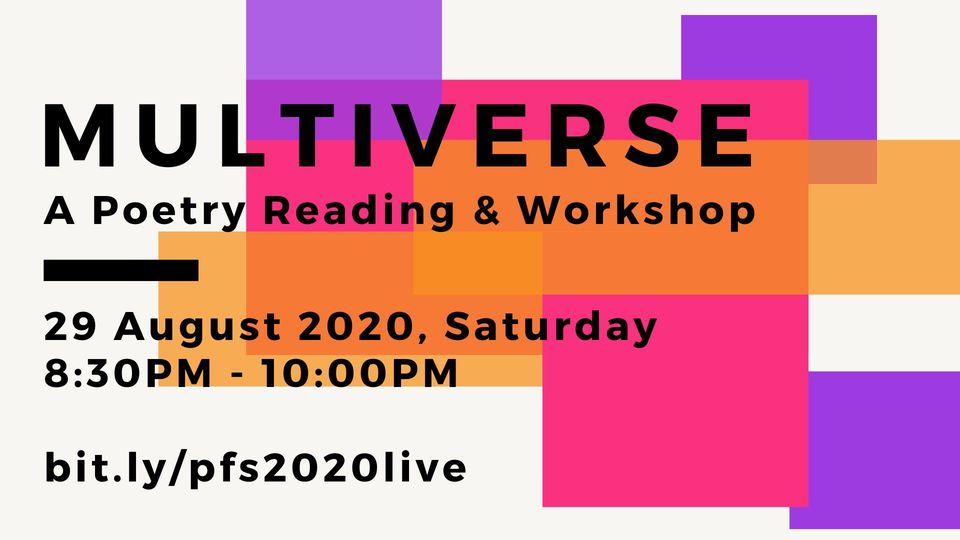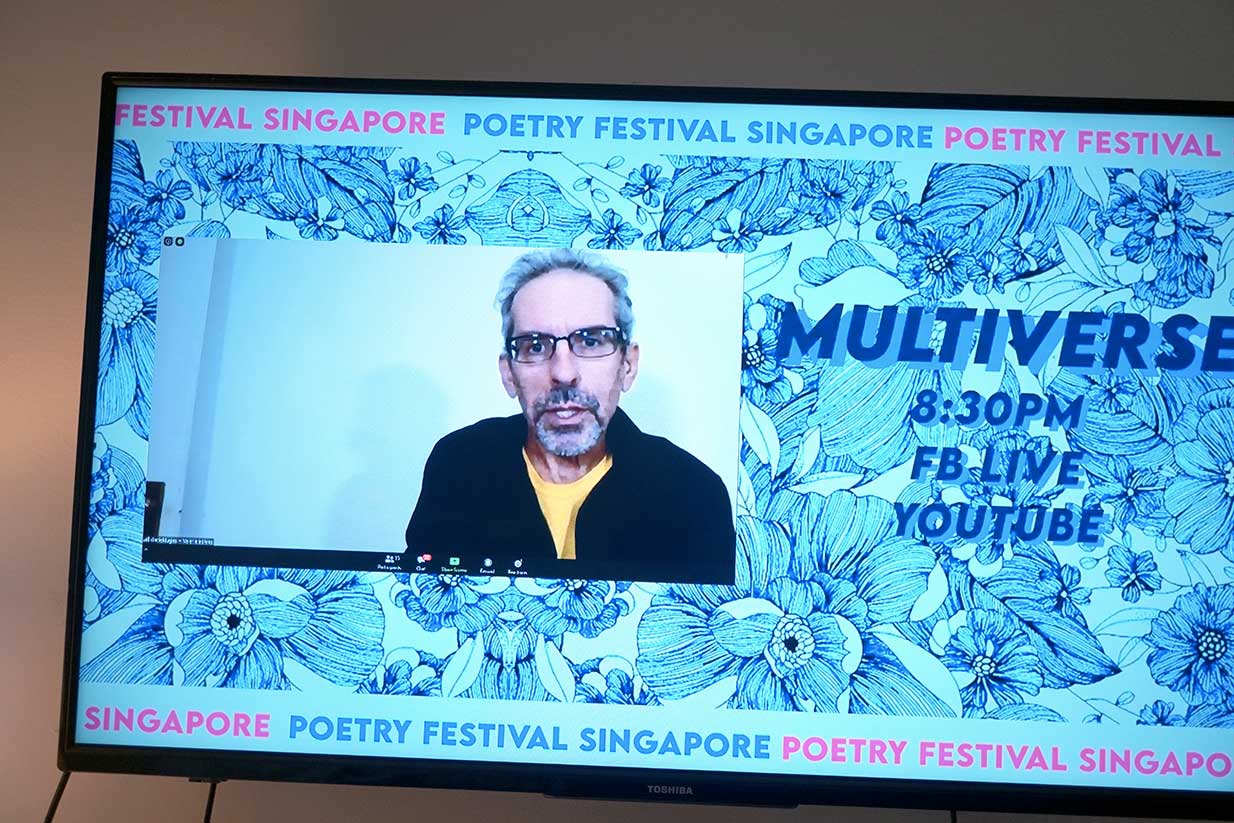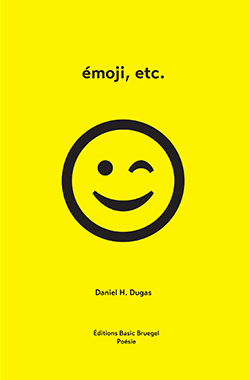From ‘Liberated Words’ (2020)
Re: Videopoetry / Vidéopoésie Interview with Catherine Parayre.
Sarah Tremlett posted the following text on the Liberated Words website:
BY SARAH TREMLETT · PUBLISHED OCTOBER 8, 2020
http://liberatedwords.com/2020/10/08/videopoetry-videopoesie-interview-with-catherine-parayre-2020/

A while ago I mentioned the launch of the must-have publication on videopoetry ¬¬– Videopoetry / Videopoésie by pioneer Canadian practitioners Daniel H. Dugas and Valerie LeBlanc (Basic Bruegel). Valerie and Daniel have now conducted a really delightful, succinct and revealing interview see https://vimeo.com/447315272 with Catherine Parayre, editor at the book’s publishing house The Small Walker Press, Brock University, Ontario.
I am of course not impartial to their work since I was fortunate enough to be invited to write an essay for the book. In doing so I was able to excavate pure gold in terms of the history of videopoetry. This relatively short interview gives a glimpse into their world and how they work together. There are also some clever green screen projections and visually playful (I love the captioned birds behind them!) videos, which seem to have their own voice, almost stealing the thunder from their makers.
Some nuggets include their views on collaboration or shared vision: ‘when we witness the same events … reprocessing what we are seeing in different ways’; and their understanding of the term ‘videopoetry’ as opposed to referencing film, even though ‘the two are permeable today’. For them, they have always used video cameras (changing format across the decades) and worked with video as an accessible medium unlike film. Ultimately Daniel says he likes the term ‘video’ which comes from the Latin videre ‘to see’.
Catherine made a very poignant point about their video images; that though captured in a book, they seem to contain movement, as opposed to the still photograph. She emphasized that they weren’t ‘quite stable’. Daniel pointed out that often they were using older technology; or low grade consumer equipment that creates a ‘ghost’. But I feel there was more to that point, and I have noted how they work with time over and over again in their practice. This sense of passing through with video; the temporal philosophical estrangement of the moment, can become a rich metanarrative in the right hands. For Valerie and Daniel, time falters but does not stop.
Jean Malavoy (2020)
Comme plusieurs, je suis extrêmement triste d’apprendre le décès de Jean Malavoy. La première fois que je l’ai rencontré, c’était à Antanarivo au Madagascar en 1997, il était responsable des activités culturelles pour la composante Canada lors des IIIes Jeux de la Francophonie. Je me souviens d’un grand souper festif avec les équipes du Canada, du Québec et du Nouveau-Brunswick. J’étais assis à côté de Jean. Il y avait beaucoup de joie, de rire, de musique. J’avais écrit dans le vif du moment un texte que je lui avais dédicacé. Le voici :

La limite élastique, 1998
Les Éditions Perce-Neige
Au fil du courant I – Objets et quotidiens (2020)

Content de participer à l’événement Au fil du courant I – Objets et quotidiens (Vidéopoèmes) dans le cadre du Festival acadien de poésie de Caraquet.
Traversée du Canada sur le mode du vidéopoème. Poètes Brigitte Lavallée, Daniel H. Dugas, Fredric Gary Comeau, Luc-Antoine Chiasson, Maya Cousineau-Mollen, Michel Thérien, Sarah Marylou Brideau, Vanessa Bell et Véronique Sylvain. Vidéo : Paul Bossé. Ambiance musicale : Pascal Lejeune.
Rabbit Brook (2020)

La ville de Moncton tenait hier une séance publique sur la proposition de rezonage du 211, chemin Mapleton (restaurant Skipper Jack’s). Je suis très content que le plan visant à couvrir une partie du ruisseau de Rabbit Brook ait été rejeté. Je m’opposais au rezonnage et je prévoyais participer à la séance, malheureusement, une urgence m’en a empêché. On m’a dit que mon texte avait été distribué aux personnes présentes. J’ai pensé le publier ici :
Le sentier Ruisseau Rabbit à Moncton fait tout au plus trois kilomètres et demi de longueur. Ce n’est pas l’un des grands sentiers de l’Amérique du Nord, mais je l’emprunte régulièrement, il traverse mon quartier. Une des sections, que j’aime particulièrement, longe le ruisseau, à cet endroit on a presque l’impression d’être en forêt.
Étant donné que le sentier est si petit, il me semble que sa dégradation, pour créer plus de place de stationnement, devient quelque chose de symbolique. Pourquoi s’acharner sur les plus petits ou les plus faibles sinon pour démontrer que le pouvoir de l’être humain est supérieur ? D’une certaine manière ce petit lopin de terre est le symbole de la résilience de la nature et de le détourner de « sa » nature serait le rendre muet.
D’après Jean-Guy Leger, Coordinateur des transports pour la Ville, 4,6% de la superficie totale de la ville de Moncton est couverte par des aires de stationnement pour automobiles. Ce chiffre est atténué évidemment par de larges zones boisées qui entourent la ville et qui font partie de son territoire. D’après ce que j’ai pu comprendre, aucune analyse n’a étudié le pourcentage de stationnement dans la zone développé à l’exception du centre-ville. Et là, la situation est dramatique. Toujours d’après Monsieur Leger, la surface de stationnement totale est de 42%! Notre ville est un stationnement à ciel ouvert où les piétons esquivent Toyota et Ford F-150.
« A Pattern Language » est un essai écrit en 1977 sur l’architecture, l’urbanisme et l’habitabilité communautaire. Dans le chapitre intitulé « Nine Per Cent », on dit qu’il n’est pas possible de créer un environnement pour les humains lorsqu’on utilise plus de 9% du territoire pour le stationnement.
Et puis, ce n’est pas seulement le parcage qui est problématique. Récemment, la ville de Moncton adoptait une motion visant à en faire davantage pour lutter contre les changements climatiques. C’était une belle initiative, mais un mois seulement après avoir timidement balbutié l’urgence climatique, le département d’ingénierie de la Ville proposait de réduire le nombre de trottoirs, qui seraient trop coûteux à entretenir.
On semble être d’accord, la ville pourrait être plus verte et plus humaine, mais créer encore plus de stationnements n’est pas une action ni responsable ni visionnaire. C’est pour cela que j’enjoins la ville, ma ville, à ne pas détruire ce petit bout de verdure. Oui, il y a des déchets qui s’y accumulent, je le vois régulièrement, mais il bon de noter qu’il n’y a à cet endroit aucune poubelle. Et dans le fond, on le sait tous, ce n’est pas ce petit ruisseau de rien du tout qui jette les sacs de chips et les tasses de café Tim Horton dans le ravin, ce sont nous, les humains.
Daniel H. Dugas
Becoming Purse (2020)

A kid with a kite stands on the edge of a cliff. We cannot see her or his face; the natural lighting of the scene draws the figure as an iPod silhouette, anonymous and universal. There is something real in the image, like a snapshot taken from an outing; it could be your kid, my kid. The purple colour in the sky and the yellowish glow at the horizon point to a sunrise on the East coast or a sunset on the West coast. This is for anyone, anywhere, with leisure time. It might even be an ode to Homan Walsh, the youth who flew his kite high above the gorge of Niagara Falls in 1848. As a result, he was able to secure a line that was used to start the construction of the suspended bridge. At the bottom of this image, there is the caption ‘Imagination takes flight’.
But the reverie is interrupted when the physical intricacies kick in. If a cliff is a location able to provide ample wind, it might also be a dangerous place to hang out in the dark, whether it’s early in the morning or late in the evening. But falling is not the only hazard; another danger lurks just behind the child’s knees. Is it a line, a rod or is it part of the ribbon of the kite, we are not sure. Will the kid trip and tumble down the precipice? We hope not, but we don’t know. Maybe the kid falls onto the rocks below, but ultimately the flying kite saves him? Maybe.
‘Go fly a kite’ is a phrase that is used to tell someone to ‘get lost’. The kid seems to be alone, but someone took the picture, so it is not the case. ‘As high as a kite,’ is an expression to indicate that someone is extremely intoxicated. Although a video would be a better way to gauge the situation, there is no evidence that the kid or the photographer is high. Louis Vuitton is inviting us to be part of a kite experiment, but we are not as yet sure what the circumstances of this flight of imagination might be.
A kite needs a tail to keep it from spinning and rolling around. The one in the picture has a long tail and will probably be stable. In French, the word tail (queue) has the same meaning as the English word, but it can also mean a penis. To me, the small protruding part on the left side of the ribbon looks like the French descriptor. And if we take the bottom section of the tail (which looks like a ‘skydancer’ or ‘tube man’ and is about the same height as the kid) and moved it to the right, juxtaposing it onto the child, we can see an appendage appear: the kid becomes a man!
And then other symbolism gets in the way: two crosses floating in mid-air. What are they? The first one is part of the frame of the kite; the second, made of ribbon, floats above and is out of focus. The latter takes the appearance of a double helix. The kid is a believer, a man of science now dabbling in molecular biology!
We don’t know what kind of kite experiment is at play here. Is it a religious or a biological quest, or is it just family fun in search of the perfect ‘sacoche’? How can this image of a kid becoming man, and a kite with religious undertones, make us feel toward a leather purse is anyone’s guess. The imagination can only hover so long above the abyss of the dreamed object. If a heavy purse makes the heart light, it can also weigh down the kite.



Poèmes de l’intérieur/Poems from the Interior (2020)

Très content de faire partie de ces Poèmes de l’intérieur, un projet de poèmes ou proses courtes (en français ou en anglais), avec enregistrement sonore. Merci au Centre de Recherche en arts interdisciplinaires et culture de création de Brock University et aux directeurs Catherine Parayre et Nicholas Hauck.
L’épidémie qui sévit depuis le début de 2020, nous a fait découvrir un confinement prolongé et redécouvrir l’intérieur du chez-soi pour y travailler, apprendre, se divertir, vivre, souffrir, rêver, et a suscité des expériences inhabituelles au sein même de ce qui nous est familier. Des poèmes en français et en anglais, de poètes établis ou émergents, nous invitent à visiter nos espaces intérieurs.
Avec: AM Matte, Daniel H. Dugas, Eric Charlebois, Fan Wu, Garry Thomas Morse, Hélène Koscielniak, Jami Macarty, Michèle Vinet, Paul Ruban, Paul Savoie, Valerie LeBlanc
https://exhibits.library.brocku.ca/s/interiors/page/poems-from-the-interior#?c=&m=&s=&cv=
Fresh AIR NB / Air frais NB (2020)

Your Word in Lights is a participatory Media Performance created by Daniel H. Dugas and Valerie LeBlanc within the Fresh AIR program at Hopewell Rocks.
Many of our projects focus on the environment and the passage of humans in the landscape. Your Word in Lights falls into this category.
We will ask visitors to offer us one word that describes their overall impression of the site. For example, the word might represent a description of the light quality at Hopewell Rocks, an animal or plant that comes to mind when experiencing the site, or a sense of wonderment inspired by the scale of this natural setting.
Participants will be able to stop by our setup on their way back up from walking on the ocean floor during low tide, or after they contemplate the overall view during the high tide. We will record the participant’s word onto a laptop and with a USB key we will transfer the word onto a portable LED sign. At times, we will go mobile and locate on the ocean floor, other times, we will install the setup on the staircase. Your Word in Lights will serve as a beacon and a reminder of the inspiration that this unique location can provide.
For more information: http://fundy.basicbruegel.com/ (under the tab – Hopewell Rocks)

Un mot en lumière est une performance médiatique participative créée par Daniel H. Dugas et Valerie LeBlanc à Hopewell Rocks dans le cadre du programme AIR Frais.
Plusieurs de nos projets mettent l’accent sur l’environnement et l’interaction humaine sur le terrain. Un mot en lumière fait partie de cette catégorie.
À Hopewell Rocks, nous demanderons aux visiteurs de nous proposer un mot qui décrit leur impression générale du site. Par exemple, le mot pourrait représenter une description de la qualité de la lumière au parc des rochers Hopewell, un animal ou une plante qui leur vient à l’esprit en découvrant le site, ou un sentiment d’émerveillement inspiré par l’ampleur de ce lieu unique.
Les participants pourront s’arrêter devant notre installation après avoir marché sur le fond marin à marée basse, ou après avoir contemplé la vue à marée haute. Nous noterons le mot du participant sur un ordinateur portable et, à l’aide d’une clé USB, nous transférerons le mot sur un panneau DEL portable. Parfois, nous nous déplacerons sur le fond marin; d’autres fois, nous nous installerons près de l’escalier. Un mot en lumière servira de phare et de rappel de l’inspiration créée par ce lieu unique.
Pour plus information : http://fundy.basicbruegel.com/ (sous l’onglet – Hopewell Rocks)
The Fresh AIR program places professional artists in Provincial parks during Labour Day Weekend (September 5 to 7, 2020) to engage with the public and develop their artistic practice or existing projects in a natural setting during the challenging reality of COVID-19.
Dans le cadre du programme AIR Frais, des artistes professionnels seront présents dans les parcs provinciaux pendant la fin de semaine de la fête du Travail (du 5 au 7 septembre 2020). Ils dialogueront avec le public et travailleront sur des projets artistiques, nouveaux ou existants, dans un cadre naturel et pendant la période difficile de la COVID 19.
Multiverse – Poetry Festival Singapore (2020)

Happy to participate in this Poetry Festival Singapore event!


SCHEDULE
Multiverse
Poetry Festival Singapore
August 29, 2020 | 08.30PM – 10.00PM (+8 GMT)
08.30PM: Opening of the show
08.31PM: Latha
08.41PM: Catherine Candano
08.51PM: Sarvin Afarinesh
09.01PM: Christopher Okemwa
09.11PM: Unmesh Mohitkar
09.21PM: Eric Tinsay Valles
09.27PM: LKN
09.31PM: Marikit
09:41PM: Daniel H. Dugas & Valerie Le Blanc
09.51PM: Tan Chee Lay
10.00PM: Closing of the on-air, and opening the off-air poetry jam
Poetry Festival Singapore, formerly known as National Poetry Festival, offers a multilingual, multicultural, multi-generational platform for poets and poetry enthusiasts in the appreciation of the art of poetry in Singapore. Poetry Festival Singapore aims also to develop the written and spoken word in the island’s four official languages and to organize events and activities related to the literary arts.
Video Interview Videopoetry / Vidéopoésie (2020)
Here is our interview with Catherine Parayre of The Small Walker Press about our book Videopoetry / Vidéopoésie. Enjoy!
1 :07 min
Why this book?
2:33 min
Many of your works are collaborative, how do you work together on projects?
8:40 min
Your book is called Videopoetry / Vidéopoésie. Many people talk about film poems or cine poetry, what guides your choice of words?
11:44 min
How does a printed text do justice to time-based material?
15:55 min
In your practice of videopoetry, in what ways is the writing of poetry inspired or directed by the video component? What is the creative-writing process?
17: 45 min
How would you say that the end product, the published book with still images, is changing or not your videopoetry work?
20:04 min
A question about the movement in the images + conclusion
Interview with Catherine Parayre (2020)
Videopoetry / Videopoésie by Daniel H. Dugas and Valerie LeBlanc has been launched through the Small Walker Press, Centre for Studies in Arts and Culture, Brock University, St. Catharines, ON. Here are some still images from our recent conversation with Dr. Catherine Parayre, Editor at The Small Walker Press. The interview will be released next week!
The online version of the book can be downloaded for free at the following address: https://dr.library.brocku.ca/handle/10464/14790
The book is also available in paper version. Purchase inquiries: basicbrugel@gmail.com
We would like to thank the Canada Council for the Arts for assistance through an Explore and Create Grant. Due to COVID 19 restrictions, we are presenting the interview in lieu of an onsite launch at Brock University.






Daniel H. Dugas
Archives
Blogroll
- A.I.R. Vallauris
- ACAD
- Adobe additional services
- Adobe Creative Cloud
- AIRIE
- Amaas
- Amazon Author Central
- ARTothèque
- Australian Poetry
- Basic Bruegel
- Bitly
- CCCA
- CDBaby
- Cycling 74
- Dissolution
- Éditions Prise de parole
- Emmedia
- eyelevelgallery
- FAVA
- Festival acadien de poésie
- Festival FRYE Festival
- FILE – Electronic Language International Festival
- Freeware list
- Fringe Online
- Galerie Sans Nom
- Gotta Minute Film Festival
- Instants Vidéo
- JUiCYHEADS
- Kindle Direct Publishing
- Klondike Institute of Art and Culture
- La Maison de la poésie de Montréal
- La Maison de la Poésie et de la Langue française Wallonie-Bruxelles
- Laboratorio Arte-Alameda
- Le Centre Jacques Cartier
- Liberated Words
- Maison Internationale de la Poésie – Arthur Haulot
- MediaPackBoard
- Miami Book Fair International
- Monoskop
- Mot Dit
- NSCAD University
- Paved Arts
- PoetryFilm
- Portail des auteurs du Nouveau-Brunswick
- RECF
- Revue Ancrages
- Salon du Livre du Grand Sudbury
- Sculpture Space
- Subtropics.org
- Sydney college for the arts
- The Centre for Contemporary Canadian Art
- The New Gallery
- Trevigliopoesia
- tumbler-documents
- V Tape
- Valerie LeBlanc
- VideoBardo
- Void Network-Κενο Δίκτυο
Categories
- #covidpoèmes
- Advertisement
- AIRIE
- Ancrages
- anthology
- Anthropocene
- Architecture
- Around Osprey
- art
- Article de presse
- arts visuels
- audio
- Australian Poetry
- Basic Bruegel Editions
- Book
- book fair
- Cafe Poet Program
- Ce qu'on emporte avec nous
- Citations gratuites
- Collaboration
- commentaire
- commentary
- Compte rendu
- conférence
- Conservation Foundation of the Gulf Coast
- COVID-19
- Critique littéraire
- culture
- Daniel Dugas
- Design
- Édition Michel-Henri
- Éditions Perce-Neige
- Éloizes
- Emmedia
- emoji etc | émoji etc
- Environnement
- essai
- essay
- Everglades
- Exhibition
- festival
- Festival acadien de poésie
- Festival Frye Festival
- FIPTR
- Flow: Big Waters
- Fundy
- Habitat
- installation
- Instants Vidéo
- interactivity
- journal
- JUiCYHEADS
- Kisii
- L'Esprit du temps
- laptop
- Leaving São Paulo
- lecture
- Livre
- logos
- Magazine
- Miami Book Fair
- Moncton 24
- novel
- OASIS
- oil spill
- perception
- performance
- Photo
- poésie
- Poetic Licence Week
- Poetry
- politics
- politique
- press
- Prise de parole
- Revue Ancrages
- salon du livre
- sculpture
- Sculpture Space
- sound
- Souvenirs
- Spirit of the Time
- Style & Artifacts
- Symposium d'art/nature
- talk
- television
- The New Gallery
- Uncategorized
- Valerie LeBlanc
- vidéo
- vidéopoésie
- Videopoetr/Vidéopoésie
- videopoetry
- visual arts
- What We Take With Us
- youth literature







